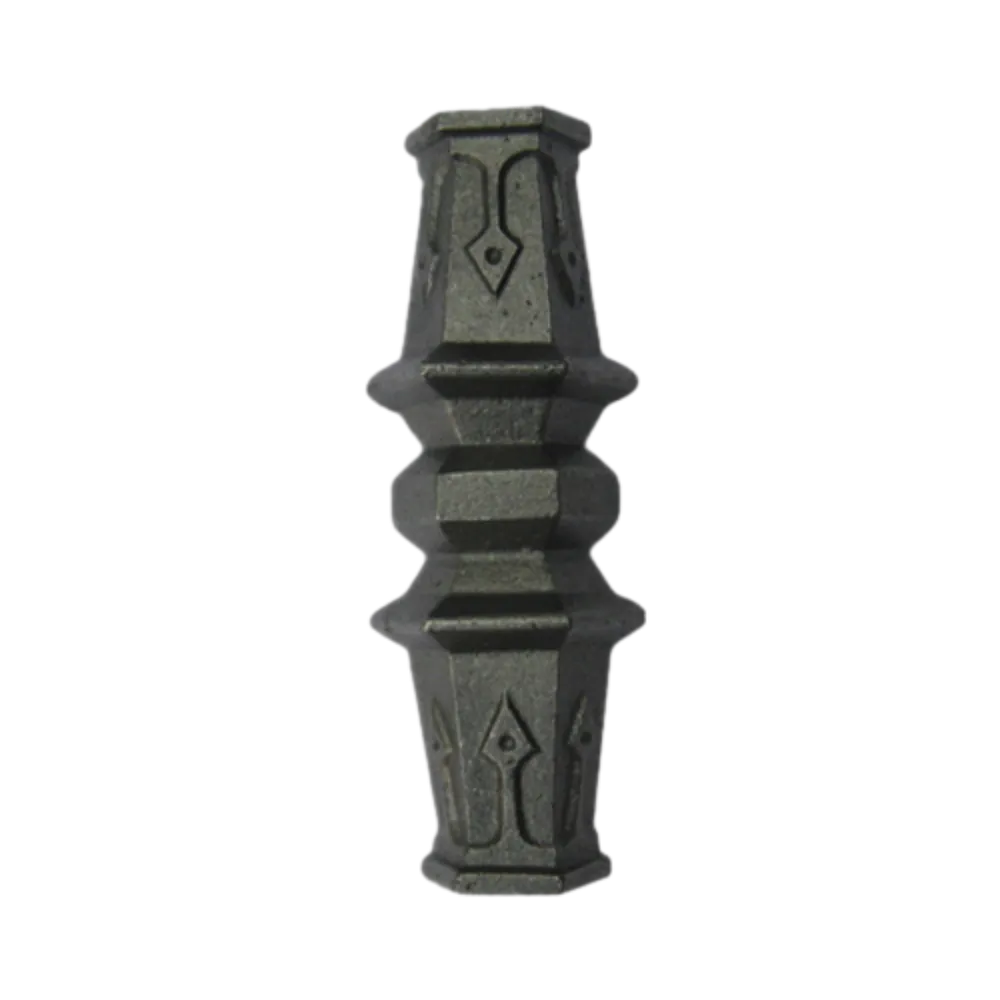wrought iron rusting
The Rusting of Wrought Iron An In-Depth Analysis
Wrought iron, known for its malleability and ductility, has been a favored material in construction and ornamental work for centuries. However, like all metals, wrought iron is susceptible to corrosion, a process that not only affects its aesthetic appeal but also its structural integrity. This article delves into the rusting of wrought iron, exploring the chemical processes, the implications of rust formation, and methods of prevention.
Understanding Rust Formation
Rusting is a specific form of corrosion that occurs primarily in iron and its alloys when they react with moisture and oxygen in the environment. The chemical reaction can be simplified into a few stages. Initially, when wrought iron is exposed to moisture, iron reacts with oxygen to form iron oxide (Fe2O3), commonly known as rust. This process is accelerated by the presence of electrolytes, such as salts, which enhance the conductivity of water, further speeding up the corrosion process.
The reaction can be summarized as follows \[ 4Fe + 3O2 + 6H2O \rightarrow 4Fe(OH)3 \] Upon further reaction, iron(III) hydroxide dehydrates to form rust, a reddish-brown substance that is both brittle and porous.
Implications of Rust
The implications of rusting are far-reaching. For structures made of wrought iron, the formation of rust can lead to weakening of the material, potentially compromising the safety and stability of buildings, bridges, and other infrastructure. Rust expands as it forms, which can lead to flaking and peeling, creating a vicious cycle where more surface area is exposed to moisture and oxygen, leading to further corrosion.
Moreover, the aesthetic deterioration caused by rust can detract from the visual appeal of wrought iron features, such as gates, railings, and sculptures. In historical contexts, such deterioration can undermine the integrity of heritage sites, making the preservation of wrought iron components a critical concern for conservationists.
wrought iron rusting

Prevention Strategies
Preventing rust on wrought iron is vital for maintaining its functionality and appearance. Several strategies can be employed to mitigate rust formation
1. Protective Coatings Applying paint or a protective sealant creates a barrier between the iron and the environment. Special rust-inhibiting paints can provide added protection.
2. Galvanization This process involves coating wrought iron with a layer of zinc, which acts as a sacrificial anode. Zinc will corrode preferentially, protecting the underlying iron from rust.
3. Regular Maintenance Routine inspections and maintenance, including cleaning to remove dirt and debris that can retain moisture, are essential in preventing rust. Any signs of rust should be addressed promptly to minimize damage.
4. Environmental Control Reducing exposure to moisture and using dehumidifiers in storage spaces can significantly decrease the likelihood of rust formation.
Conclusion
While wrought iron offers numerous advantages in terms of strength and versatility, its susceptibility to rust is a challenge that must be addressed. Understanding the rusting process and implementing effective prevention strategies can prolong the life of wrought iron structures and maintain their aesthetic charm. Through careful maintenance and protective measures, we can ensure that wrought iron continues to serve as a reliable and beautiful material in our built environment.
-
Wrought Iron Components: Timeless Elegance and Structural StrengthNewsJul.28,2025
-
Window Hardware Essentials: Rollers, Handles, and Locking SolutionsNewsJul.28,2025
-
Small Agricultural Processing Machines: Corn Threshers, Cassava Chippers, Grain Peelers & Chaff CuttersNewsJul.28,2025
-
Sliding Rollers: Smooth, Silent, and Built to LastNewsJul.28,2025
-
Cast Iron Stoves: Timeless Heating with Modern EfficiencyNewsJul.28,2025
-
Cast Iron Pipe and Fitting: Durable, Fire-Resistant Solutions for Plumbing and DrainageNewsJul.28,2025
-
 Wrought Iron Components: Timeless Elegance and Structural StrengthJul-28-2025Wrought Iron Components: Timeless Elegance and Structural Strength
Wrought Iron Components: Timeless Elegance and Structural StrengthJul-28-2025Wrought Iron Components: Timeless Elegance and Structural Strength -
 Window Hardware Essentials: Rollers, Handles, and Locking SolutionsJul-28-2025Window Hardware Essentials: Rollers, Handles, and Locking Solutions
Window Hardware Essentials: Rollers, Handles, and Locking SolutionsJul-28-2025Window Hardware Essentials: Rollers, Handles, and Locking Solutions -
 Small Agricultural Processing Machines: Corn Threshers, Cassava Chippers, Grain Peelers & Chaff CuttersJul-28-2025Small Agricultural Processing Machines: Corn Threshers, Cassava Chippers, Grain Peelers & Chaff Cutters
Small Agricultural Processing Machines: Corn Threshers, Cassava Chippers, Grain Peelers & Chaff CuttersJul-28-2025Small Agricultural Processing Machines: Corn Threshers, Cassava Chippers, Grain Peelers & Chaff Cutters












